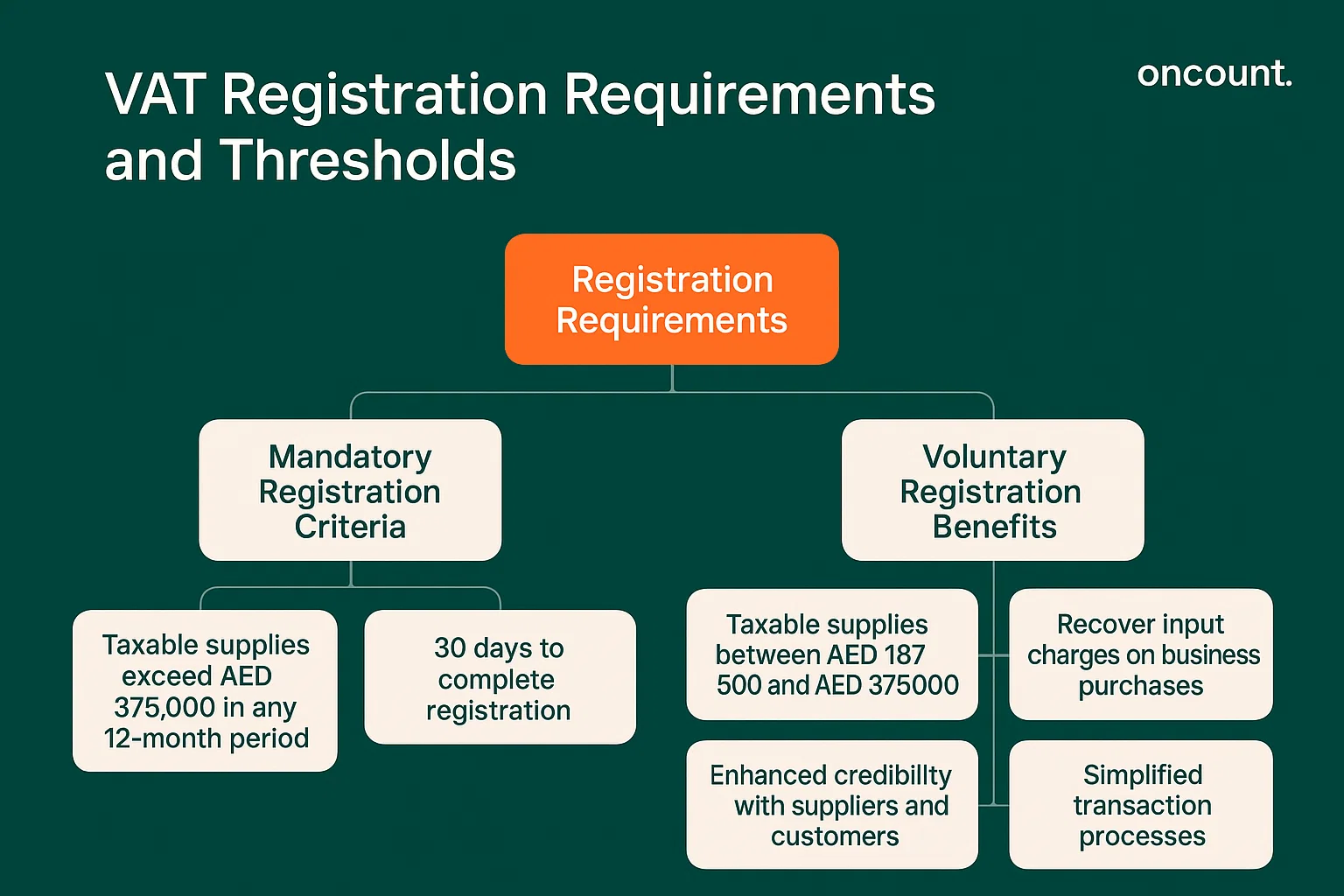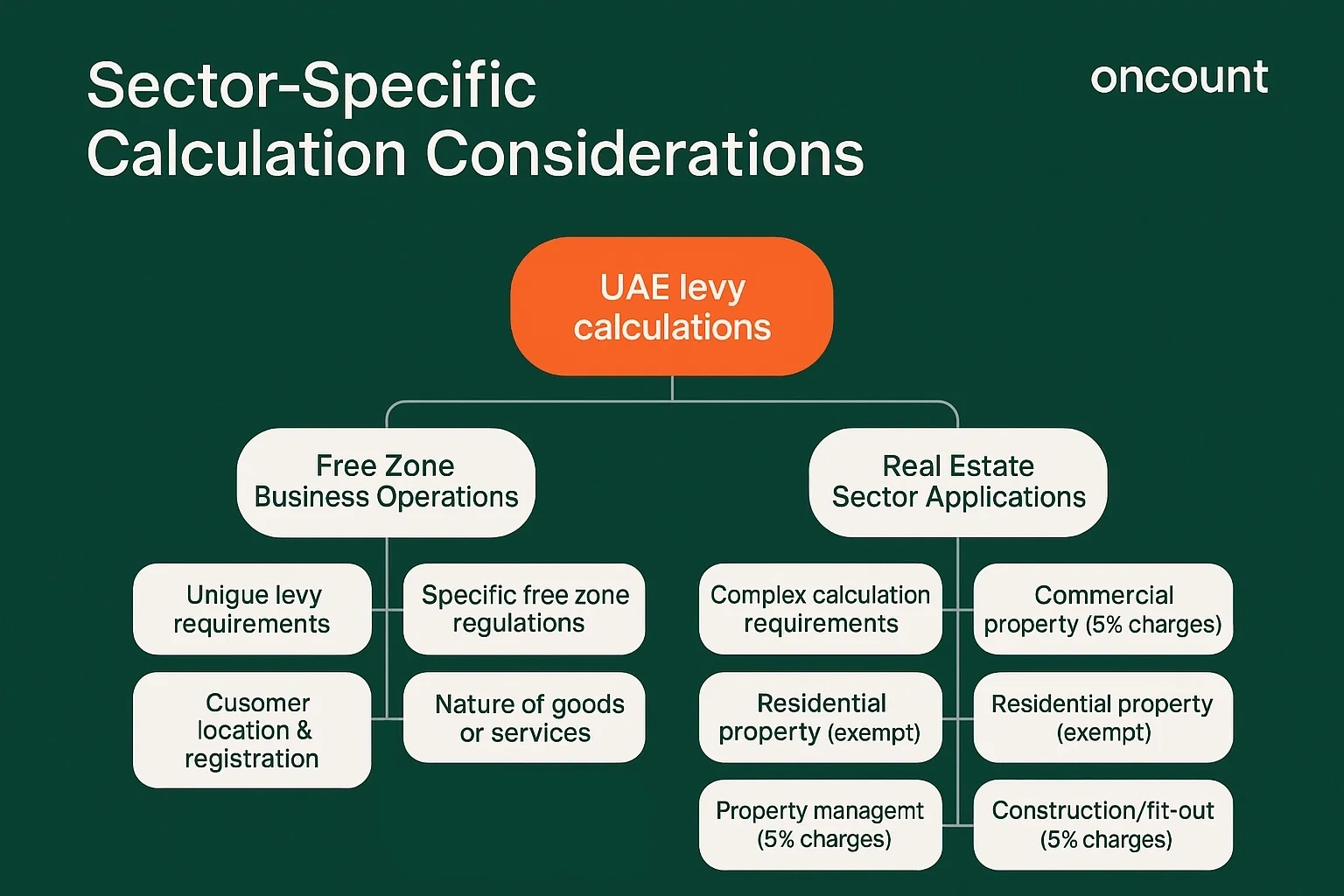VAT Framework in the UAE: Foundation and Structure
The UAE introduced Value Added Tax (VAT) on January 1, 2018, as part of the Gulf Cooperation Council’s coordinated approach to taxation. The Federal Tax Authority (FTA) oversees VAT administration, ensuring businesses comply with established regulations while supporting the UAE’s economic diversification goals.
The VAT rate in the UAE is set at a standard 5%, making it one of the lowest globally. This indirect tax applies to most goods and services, with certain categories receiving zero-rated or exempt VAT treatment in line with FTA guidelines.
Key Categories in UAE Business Operations
The FTA classifies supplies into three primary categories:
- Standard-rated supplies (5%): Most goods and services fall under this category
- Zero-rated supplies (0%): Includes exports, international transport, and precious metals
- Exempt supplies: Financial services, residential property sales, and local passenger transport
Understanding these classifications is crucial when you calculate charges in Dubai or any UAE emirate, as each category affects your levy liability differently.
Step-by-Step Guide to Calculate Charges on Sales and Purchases
Basic Calculation Formula
To calculate the amount on standard-rated supplies, follow this fundamental formula:
Amount = Net Price × 0.05
Total Price Including Charge = Net Price + Amount
Practical Example: Standard Calculation
Consider a Dubai-based consulting firm providing services worth AED 10,000:
- Net price: AED 10,000
- Amount: AED 10,000 × 5% = AED 500
- Total price including charge: AED 10,000 + AED 500 = AED 10,500
This calculation demonstrates how businesses collect charges on behalf of the FTA, adding the levy to their service prices.
Reverse Calculation: Finding Net Price from Charge-Inclusive Amount
When dealing with prices that include levy, businesses need to separate the net amount from the charge component:
Net Price = Total Price ÷ 1.05
Amount = Total Price – Net Price
Example of reverse calculation:
- Total price including levy: AED 5,250
- Net price: AED 5,250 ÷ 1.05 = AED 5,000
- Amount: AED 5,250 – AED 5,000 = AED 250
Input and Output: Understanding the Mechanism
Output Calculation
Output charges represent the levy businesses collect on sales of goods and services to customers. Every registered entity must charge output levy at the applicable percentage and remit these collections to the FTA.
When you calculate charges in the UAE for sales transactions, the output charge becomes a liability on your books until payment to the authority.
Input Recovery Process
Input charges encompass the levy businesses pay on purchases, expenses, and imports. The UAE system allows eligible entities to recover input charges, effectively making it a flow-through levy rather than a cost.
Key considerations for input recovery:
- Maintain proper invoices and supporting documentation
- Ensure purchases relate to taxable business activities
- Meet FTA requirements for recovery claims
- File timely returns to claim input credits
Payable Calculation
The net payable to the FTA equals:
Payable = Output Collected – Input Paid
If input exceeds output, businesses may claim a refund from the FTA, subject to verification and compliance requirements.
Registration Requirements and Thresholds

Mandatory Registration Criteria
Businesses must register when their taxable supplies exceed AED 375,000 in any 12-month period. The FTA guidance stipulates that companies reaching this threshold have 30 days to complete registration.
Voluntary Registration Benefits
Companies with taxable supplies between AED 187,500 and AED 375,000 may choose voluntary registration. This option provides several advantages:
- Ability to recover input charges on business purchases
- Enhanced credibility with suppliers and customers
- Simplified transaction processes with other registered entities
Sector-Specific Calculation Considerations

Free Zone vs. Mainland Business Operations
Free zone entities face unique levy calculation requirements. While many free zone activities qualify for zero-rating, businesses must carefully evaluate each transaction’s treatment based on:
- Customer location and registration status
- Nature of goods or services provided
- Specific free zone regulations and FTA interpretations
Real Estate Sector Applications
The UAE real estate sector involves complex calculations, particularly for:
- Commercial property transactions (5% charges)
- Residential property sales (exempt)
- Property management services (5% charges)
- Construction and fit-out services (5% charges)
Real estate companies must understand how to calculate charges for different transaction types while maintaining compliance with ESR and other regulatory requirements.
Technology Solutions for Accurate Management
Automated Calculation Systems
Modern enterprises leverage technology to manage effectively, implementing solutions that:
- Calculate charges automatically across all transactions
- Generate compliant invoices and credit notes
- Integrate with accounting systems for seamless reporting
- Provide audit trails for FTA compliance verification
Return Preparation and Filing
Businesses registered must file returns quarterly, declaring output charges, input levies, and net amounts payable. Advanced software solutions streamline this process while ensuring accuracy and regulatory compliance.
Common VAT Calculation Errors and Prevention Strategies
Frequent Calculation Mistakes
Based on FTA audit findings, common errors include:
- Incorrect rate application on mixed supplies
- Improper treatment of zero-rated exports
- Inadequate documentation for input recovery
- Timing differences in recognition and payment
Best Practices for Compliance
Businesses collect charges, responsibilities extend beyond basic calculations. Implementing robust processes ensures ongoing compliance:
- Regular training for finance teams on regulations
- Quarterly compliance reviews and reconciliations
- Proactive engagement with specialists for complex transactions
- Maintenance of comprehensive documentation systems
Expert Insights: Maximizing Efficiency in UAE Operations
Strategic Planning Considerations
Successful UAE enterprises integrate considerations into broader financial planning. Experts recommend evaluating:
- Supply chain structures for optimal efficiency
- Customer and supplier registration status impacts
- Cross-border transaction planning and documentation
- Technology investments for automated compliance management
Regulatory Updates and Future Developments
The FTA continues refining regulations based on implementation experience. Enterprises should monitor official announcements regarding:
- Industry-specific guidance updates
- Digital services developments
- Enhanced compliance requirements and audit procedures
- Regional coordination initiatives
Building Calculation Competency
Mastering how to calculate charges in the UAE requires understanding both technical requirements and practical applications. Enterprises that invest in proper calculation procedures, maintain accurate records, and stay current with regulatory developments position themselves for long-term success in the UAE market.
The standard rate is 5% represents just one component of comprehensive compliance. By implementing systematic approaches to calculation, enterprises can minimize compliance risks while optimizing their positions within the UAE’s evolving fiscal framework.
For complex scenarios or specialized industry requirements, consider engaging qualified professionals who understand the nuances of UAE regulations and can provide tailored guidance for your specific circumstances.



